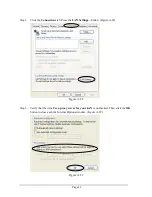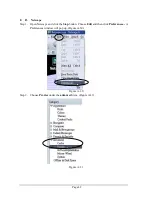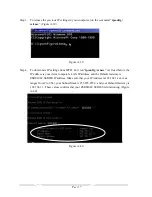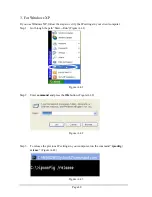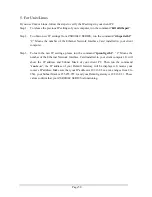
Page
52
Appendix C: Terminology
‧
Auth
(TCP
Auth
entication)
It implements the Identification Protocol, which can identify active TCP connections in Linux
environment.
‧
Boot
It is the process when the computer starts executing instructions.
‧
Browser
It is an application program that helps users to view and interact with the information of the
World Wide Web.
‧
Cable
Modem
It is a device that connects a computer to the Internet via the cable television network. It
features asymmetric transmission rates: around 36 Mbps downstream from the Internet to the
computer, and from 200 Kbps to 2 Mbps upstream from the computer to the Internet.
‧
CuSeeMe
It is a video-phone software designed for Windows Operating System. It allows at most 12
on-line users to see and chat with each other. You can also set up your own video chat rooms
and control the entry of these rooms.
‧
DHCP
(
D
ynamic
H
ost
C
onfiguration
P
rotocol)
It is a protocol that automates the assignment and acquirement of IP addresses between a
server and a client in a network.
‧
DMZ
(
D
e-
M
ilitarized
Z
one)
It allows LAN clients behind a NAT Router to be totally exposed and accessible to the WAN
side in order to run special applications or set up a server.
‧
DNS
(
D
omain
N
ame
S
ystem)
Domain Name System explains where Internet domain names are located. In addition, it
translates Internet domain names into Internet Protocol (IP) addresses. A domain name must
be meaningful, so you can remember it easily for the access of websites.
‧
Domain
It is a subnet work composed of a group of clients and servers.
‧
DoS
(
D
enial
o
f
S
ervice)
Denial of Service attacks network devices and try to disable the devices.
‧
Dynamic IP Address
Dynamic IP Address is automatically assigned to a client in a TCP/IP network by a DHCP
server in the network.
‧
Ethernet
It is a common LAN protocol defined as the 802.3 standard by IEEE (Institute of Electrical
and Electronics Engineers). All clients in the network share the total bandwidth. It could be 10
Mbps (Ethernet), 100 Mbps (Fast Ethernet) or 1000 Mbps (Gigabit Ethernet).
‧
FTP
(
F
ile
T
ransfer
P
rotocol)




